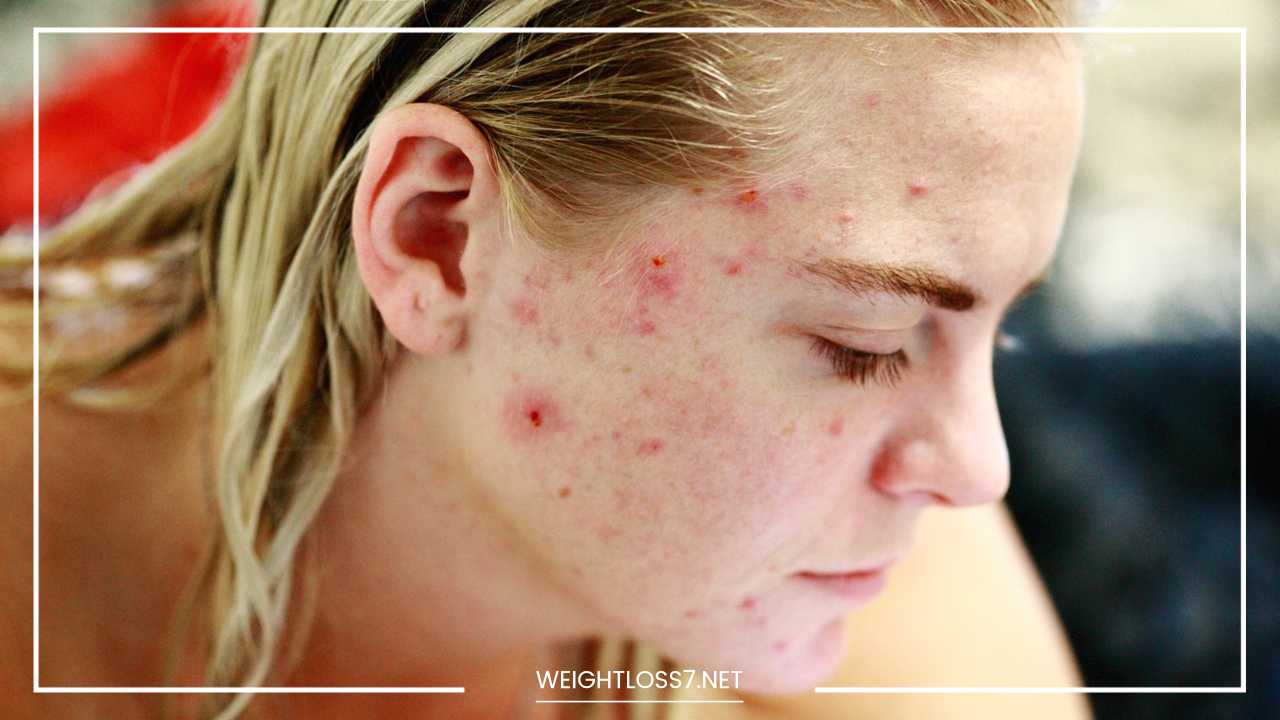What is Acne? Treatments, Tips & Self-Confidence

What is Acne
Understanding and Combating Acne: A Comprehensive Guide to Zits and Beyond
Acne. The mere mention of the word conjures images of red, inflamed pimples and a wave of self-consciousness. But acne is more than just blemishes; it’s a complex skin condition that affects millions of people worldwide.
This comprehensive guide delves deep into the world of acne, exploring its causes, symptoms, different types, and, most importantly, effective strategies for managing and treating it.
Unveiling the Acne Formation Process: From Clogged Pores to Pimples
Acne vulgaris, the most common form of acne, arises when hair follicles – tiny tunnels in your skin – become clogged.
These follicles house sebaceous glands, responsible for producing sebum, an oily, waxy substance that lubricates and protects your skin. However, when things go awry, the following chain reaction occurs:
- Hormonal Havoc: During puberty, hormonal changes, particularly an increase in androgens (male sex hormones present in both sexes), kickstart the sebaceous glands into overdrive. This surge in oil production disrupts the delicate balance within the follicle.
- Dead Skin Buildup: Skin cells naturally shed, but sometimes they don’t shed properly, forming a sticky layer that traps sebum within the pore. This creates a breeding ground for bacteria.
- Bacterial Blitz: A specific type of bacteria, Propionibacterium acnes (P. acnes), thrives in the clogged pores. This bacteria feeds on sebum and triggers inflammation, leading to the development of pimples.
The Spectrum of Acne: From Mild to Severe
While the basic process remains the same, acne manifests in various forms, each with its own characteristics:
-
Comedones: These are the non-inflammatory first stage of acne. They come in two types:
- Whiteheads: Closed clogged pores filled with sebum and dead skin cells, appearing as small, white bumps under the skin.
- Blackheads: Open clogged pores where the sebum has oxidized, giving it a black appearance due to exposure to air.
-
Papules: Small, red, tender bumps that develop when inflammation occurs around clogged pores.
-
Pustules: Commonly known as pimples, these are pus-filled bumps that form when whiteheads become inflamed and infected by P. acnes bacteria.
-
Nodules: Large, solid, painful bumps that develop deep within the skin. These are more severe than papules and can leave scars.
-
Cysts: The most severe form of acne. These large, pus-filled lumps can cause significant scarring and are often painful.
Beyond the Face: Unveiling the Unexpected Locations of Acne Breakouts
While acne is most commonly associated with the face, it can erupt on various areas of the body due to the high concentration of sebaceous glands:
- Chest: The chest is a common area for acne breakouts, particularly for individuals who sweat a lot or wear tight-fitting clothing that traps sweat and bacteria.
- Back: Similar to the chest, the back is prone to acne breakouts due to sweat and friction from clothing.
- Shoulders: The shoulders, like the back and chest, have a high concentration of oil glands, making them susceptible to breakouts.
- Upper arms: Breakouts on the upper arms can occur due to friction from clothing or comedogenic lotions and body oils.
Beyond Teen Troubles: Unveiling the Factors that Trigger Adult Acne
While acne is often associated with teenagers, it can affect people of all ages, particularly adults. Here’s a breakdown of some key factors that can contribute to adult acne:
- Hormonal Fluctuations: Hormonal changes throughout a woman’s life cycle, such as during menstruation, pregnancy, and menopause, can trigger acne breakouts.
- Polycystic Ovary Syndrome (PCOS): This hormonal imbalance can lead to increased androgen levels, contributing to adult acne.
- Stress: Chronic stress can exacerbate acne by increasing cortisol levels, which can stimulate oil production and inflammation.
- Medications: Certain medications, such as birth control pills or corticosteroids, can trigger acne breakouts as a side effect.
- Diet: While not a direct cause, some studies suggest a link between high-glycemic index (GI) foods and dairy products and acne breakouts.
The Emotional Toll of Acne: More Than Just Skin Deep
Acne can be more than just a physical concern. It can significantly impact a person’s self-esteem and mental well-being, leading to feelings of:
- Embarrassment: Acne breakouts can be a source of significant embarrassment, especially for teenagers and young adults.
- Anxiety: The constant worry about breakouts and their social implications can lead to anxiety and social isolation.
- Depression: In severe cases, acne can contribute to feelings of depression and low self-worth.
Taking Back Control: Effective Strategies for Managing and Treating Acne
The good news is that acne is a treatable condition! Here’s a breakdown of various strategies to combat breakouts and achieve clearer skin:
-
Establishing a Gentle Skincare Routine:
- Cleansing: Wash your face twice daily with a gentle, fragrance-free cleanser and lukewarm water. Avoid harsh scrubs and over-washing, which can strip your skin of its natural oils and irritate it.
- Moisturizing: Even oily skin needs moisture! Choose a non-comedogenic moisturizer that won’t clog pores. Look for ingredients like hyaluronic acid or ceramides, which hydrate without feeling greasy.
- Sun Protection: The sun can worsen acne and contribute to scarring. Apply a broad-spectrum sunscreen with SPF 30 or higher every day, even on cloudy days.
-
Over-the-counter (OTC) Products: For mild acne, OTC topical medications can be effective. Look for ingredients like:
- Benzoyl peroxide: This ingredient helps kill bacteria and reduce inflammation.
- Salicylic acid: A gentle exfoliant that helps unclog pores and prevent new breakouts.
- Alpha hydroxy acids (AHAs): These acids like glycolic acid help remove dead skin cells and promote smoother skin texture.
-
Prescription Medications: For moderate to severe acne, a dermatologist can prescribe stronger medications:
- Topical retinoids: These medications, derived from vitamin A, promote skin cell turnover and unclog pores. They can be irritating initially, so it’s crucial to use them as directed.
- Antibiotics: Oral or topical antibiotics can help target P. acnes bacteria and reduce inflammation. However, long-term use can lead to antibiotic resistance, so they’re typically used for a limited period.
- Hormonal medications: For women with hormonal acne, birth control pills with anti-androgenic properties can help regulate hormone levels and reduce breakouts.
-
Professional Acne Treatments: Dermatologists offer various in-office procedures to target specific acne concerns:
- Light therapy: Blue light therapy can kill P. acnes bacteria and reduce inflammation.
- Chemical peels: These treatments use exfoliating acids to remove dead skin cells and unclog pores.
- Cortisone injections: For large, painful nodules or cysts, a dermatologist may inject cortisone to reduce inflammation.
-
Lifestyle Modifications: While not a cure, certain lifestyle changes can support acne management:
- Maintain a Healthy Diet: While there’s no one-size-fits-all acne diet, some research suggests limiting processed foods, sugary drinks, and dairy products may be beneficial. Focus on consuming plenty of fruits, vegetables, and whole grains.
- Manage Stress: Chronic stress can exacerbate acne. Practice relaxation techniques like yoga, meditation, or deep breathing to manage stress levels.
- Get Enough Sleep: Aim for 7-8 hours of quality sleep each night. When you’re well-rested, your body is better equipped to manage stress hormones and promote skin health.
- Reduce Friction: Friction from clothing or tight headbands can irritate the skin and worsen acne. Choose loose-fitting, breathable clothing, and avoid touching your face frequently.
Remember: Consistency is key! Developing a regular skincare routine and sticking with your treatment plan, even when you don’t see immediate results, is crucial for managing acne effectively.
Seeking Professional Help: The Role of a Dermatologist in Acne Treatment
If you’re struggling with acne, don’t hesitate to consult a dermatologist. A dermatologist is a medical professional specializing in skin conditions like acne. They can:
- Diagnose the type and severity of your acne.
- Develop a personalized treatment plan based on your individual needs.
- Prescribe stronger medications if necessary.
- Offer guidance on skincare practices and lifestyle modifications.
- Provide advice on preventing acne scars.
Living with Confidence Beyond Breakouts
Acne can be a frustrating and sometimes embarrassing experience. However, with proper treatment and self-care strategies, you can achieve clearer, healthier skin and improve your overall well-being. Here are some additional tips for boosting your confidence while managing acne:
- Focus on the Positives: Don’t let acne define you. Celebrate your other positive qualities and focus on what makes you unique.
- Embrace Makeup (if desired): Makeup can help camouflage blemishes and boost your confidence. However, choose non-comedogenic makeup that won’t clog your pores.
- Seek Support: Talk to a trusted friend, family member, therapist, or doctor about how acne is affecting you. Sharing your feelings can be a great way to relieve stress and gain support.
- Challenge Negative Self-Talk: Negative self-talk about your skin can worsen your emotional state. Practice positive affirmations and focus on self-compassion.
- Educate Yourself: The more you know about acne, the better equipped you’ll be to manage it. Read reliable sources of information and consult with your dermatologist for personalized advice.
- Celebrate Milestones: Track your progress and acknowledge even small improvements in your skin. Celebrating these milestones can keep you motivated on your acne-fighting journey.
The Road to Clearer Skin: A Final Note
Remember, acne is a common skin condition, and you’re not alone. By following the strategies outlined in this guide and consulting with a dermatologist, you can effectively manage your acne and achieve clearer, healthier skin.
Don’t be discouraged by setbacks; with dedication and the right approach, you can gain control of your acne and feel more confident in your own skin.
Demystifying Acne Myths: Separating Fact from Fiction
There’s a lot of misinformation circulating about acne. Let’s clear up some common myths:
-
Myth: Greasy food causes acne.
-
Fact: While a healthy diet is essential for overall health, there’s no single acne-causing food. However, some studies suggest a link between high-glycemic foods and dairy products and acne breakouts.
-
Myth: Squeezing pimples helps get rid of them faster.
-
Fact: Picking and popping pimples can worsen inflammation, lead to scarring, and increase the risk of infection.
-
Myth: Tanning helps clear acne.
-
Fact: Tanning can initially appear to improve acne by masking redness. However, UV rays damage the skin, ultimately worsening acne and increasing the risk of premature aging and skin cancer.
-
Myth: Acne only affects teenagers.
-
Fact: Acne can affect people of all ages, with hormonal fluctuations, stress, and certain medications contributing to adult acne.
-
Myth: Acne medications are harsh and damage the skin.
-
Fact: While some acne medications can cause dryness or irritation initially, there are many well-tolerated options available. A dermatologist can help you find a treatment plan that’s right for your skin type.
Understanding Acne Scars: Prevention and Treatment
While acne itself is not a life-threatening condition, acne scars can cause lasting emotional distress. Here’s what you need to know:
-
Types of Acne Scars:
- Ice pick scars: Narrow, deep scars that resemble the tip of an ice pick.
- Rolling scars: Wavy, uneven scars that create a rolling appearance on the skin.
- Box scars: Sharp-edged, deep scars with defined borders.
-
Preventing Acne Scars: The best way to minimize scarring is to treat acne promptly and avoid picking at pimples.
-
Treating Acne Scars: Several treatments can help improve the appearance of acne scars, including:
- Microneedling: This minimally invasive procedure creates tiny punctures in the skin, stimulating collagen production and improving scar texture.
- Laser therapy: Different lasers target specific scar types to improve their appearance.
- Dermal fillers: Fillers can be used to plump up depressed scars.
- Chemical peels: These treatments remove the outer layer of skin, promoting smoother texture.
The Future of Acne Treatment: Emerging Technologies and Research
The field of dermatology is constantly evolving, and new acne treatments are on the horizon. Here’s a glimpse into the future:
- Personalized Medicine: Dermatologists are increasingly looking towards personalized medicine, tailoring treatment plans based on individual factors like genetics and the specific acne subtype.
- Anti-inflammatory Medications: New research focuses on developing medications that target the inflammatory response associated with acne.
- Gut Microbiome and Acne: Emerging research explores the link between the gut microbiome and acne, potentially leading to new treatment options.
Final Word: A Message of Hope and Empowerment
Acne can be a frustrating experience, but it’s important to remember that you’re not alone. With the right knowledge, treatment approach, and support system, you can effectively manage your acne and achieve clearer, healthier skin.
Don’t be afraid to seek professional help from a dermatologist, and embrace a positive self-image throughout your acne journey. Remember, beautiful skin is healthy skin, but true beauty radiates from within.

















